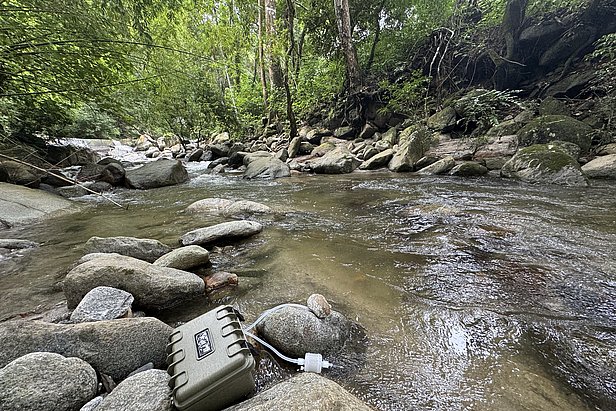10.10.2024 | Haoyun Liu | WSL News
Professor Loïc Pellissier leads the joint research group Ecosystems and Landscape Evolution at WSL and ETH Zurich. He was awarded a CHF 1.75 million Consolidator Grant from the Swiss National Science Foundation. The grant will fund the study of interactions between landscape tectonics and the formation of new species.

Congratulations on the SNSF Consolidator Grant, which will fund your project “BurGeon” (Bursting speciation from Geological DyNamics in mountains). To put the project into context, how do landscapes influence biodiversity?
We know that there are more plant species in the tropics than at higher latitudes. The richest regions are all in the mountains, but not all mountains are rich in plant species. We mapped the global distribution of plant species, which appears to be very uneven: there are regional hotspots that are extremely diverse.
What is the project’s main research question?
Our project aims to understand why mountains are so species-rich. More specifically, we are interested in how tectonic, geological, and climatic processes influence diversification, which is the formation of new species.
How did you develop the hypothesis that biodiversity depends on landscape change?
We spent five years studying the Hengduan Mountains in China, a region very rich in plant species. The presence of three major rivers side by side - the Mekong, the Yangtze, and the Salween - is evidence of intense tectonic activity. This planted an idea in our minds: diversification requires landscapes in motion. Other biodiversity hotspots characterised by dynamic landscapes support this hypothesis. In the northern Andes, tectonic activity has created new habitats for many species to colonise and adapt to. In eastern Madagascar, heavy rainfall has eroded habitats, causing them to fragment and reconnect. This dynamic process, which both isolates and reunites species, also seems to promote diversification.
Which landscapes will be the focus of the study?
We will be working in the Atlantic Forest of Brazil, the Andean region of Colombia, and the Oaxaca region of southern Mexico. In each region, we will select three areas, each about 100 km by 100 km. For each landscape, we will map the composition of plant species and their genetic lineages. This has never been done before.
What methods will you use to understand these landscapes?
We will use environmental DNA (eDNA) to record and map the plant species in each area. eDNA is genetic material found in the environment, for example from pollen or leaf debris, which we can use to identify the plants that inhabit the area. Then, we will develop new methods to trace lineages within species, to uncover evolutionary processes such as population isolation. By collating vegetation and geological data, we hope to better understand the mechanisms driving such species biodiversity patterns.
What is the long-term objective?
Ultimately, we want to understand the conditions under which complex life can evolve. Our group is part of the Centre for the Origin and Prevalence of Life at ETH Zurich. Our goal is to not only understand the origin of complex life on Earth, but also the geological conditions that could bring it to other planets. We hypothesise that tectonic activity is a prerequisite for complex life.
How can your research help address today's biodiversity challenges?
The data from the nine areas of interest will contribute to a model that will extend our findings to other landscapes. The methodology we will develop can also be applied to species conservation in the context of climate change. Through international collaborations, we will make our methods more accessible and share our technical expertise. eDNA is a revolutionary approach and could set new standards for biodiversity conservation and monitoring.
The SNSF Consolidator Grant is the equivalent of the European Research Council (ERC) Consolidator Grant, which was not available to Switzerland-based groups from 2021-2024. Researchers with 7-12 years of experience can receive up to 1.75 million Swiss francs to gain independence. From 2025 onwards, research teams in Switzerland will again be eligible to apply for ERC Consolidator Grants.
Links ¶
Chang, Y., Gelwick, K., Willett, S. D., Shen, X., Albouy, C., Luo, A., … Pellissier, L. (2023). Phytodiversity is associated with habitat heterogeneity from Eurasia to the Hengduan Mountains. New Phytologist, 240(4), 1647-1658. https://doi.org/10.1111/nph.19206
Contact ¶
Copyright ¶
The Swiss Federal Research Institute WSL provides the artwork for imaging of press articles relating to this media release for free. Transferring and saving the images in image databases and saving of images by third parties is not allowed.
